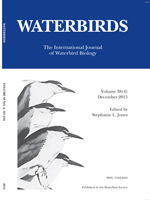The reproductive biology of the Striated Heron (Butorides striata) was studied in the lagoon of the Reserve of the Universidad Nacional del Litoral, Santa Fe, Argentina, during two breeding seasons: September 2012–February 2013 (n = 77) and September 2013–March 2014 (n = 125). All nests (n = 202) were built on waxy-leaf nightshade (Solanum glaucophyllum) at 0.99 ± 0.27 m above water level. The incubation period was 20–23 (21.71 ± 1.57) days; laying and hatching took place on successive days. An average of 2.63 ± 0.60 (Range = 2–4) opaque pale blue eggs were recorded per nest. Length, width and weight of eggs did not differ between seasons. Double (n = 43) and triple (n = 47) broods were recorded. A total of 631 eggs were monitored; no differences were detected in breeding, hatching, nesting, or fledging success between seasons. The time spent by chicks in the nest was 14.6 ± 2.16 days, and the average number of chicks per nest was 2.15 ± 0.55. Age-specific mortality rate for eggs was 22% and 38% and for chicks 47% and 35% for the first and second seasons, respectively. Sixty-one percent of nest failures were related to the disappearance of eggs or chicks from the nests, possibly due to predation or climatic factors.
How to translate text using browser tools
1 December 2015
Reproductive Biology of Striated Heron (Butorides striata) in Argentina
Pamela Olguín,
Adolfo Beltzer,
Alejandro Giraudo,
Silvia Regner,
Marcelo Juani,
Mercedes Vianco,
Emiliano Mariano,
Rodrigo Lorenzón,
Evelina Leon
ACCESS THE FULL ARTICLE

Waterbirds
Vol. 38 • No. 4
December 2015
Vol. 38 • No. 4
December 2015
Ardeidae
Argentina
Butorides striata
reproductive biology
Striated Heron




